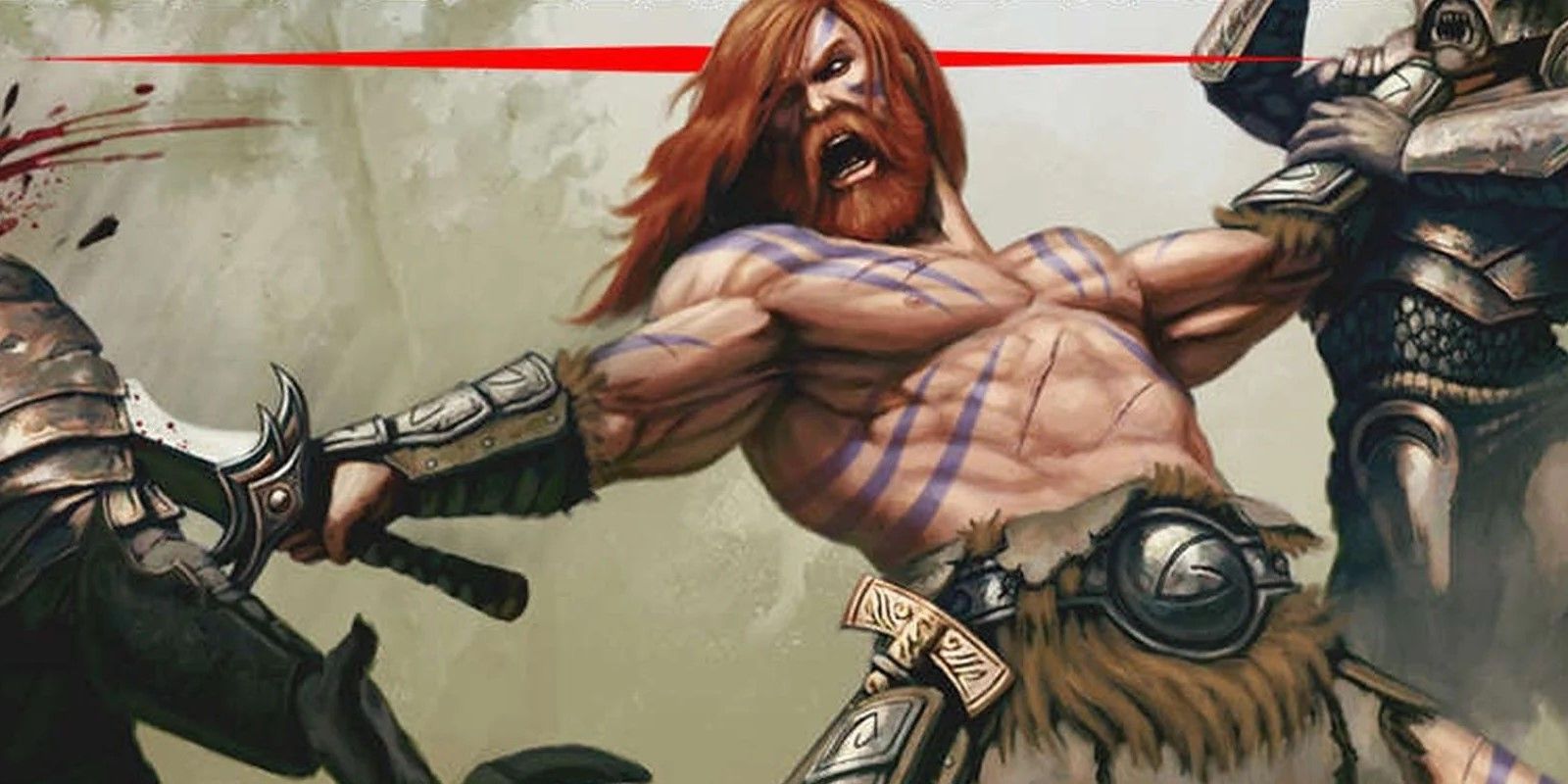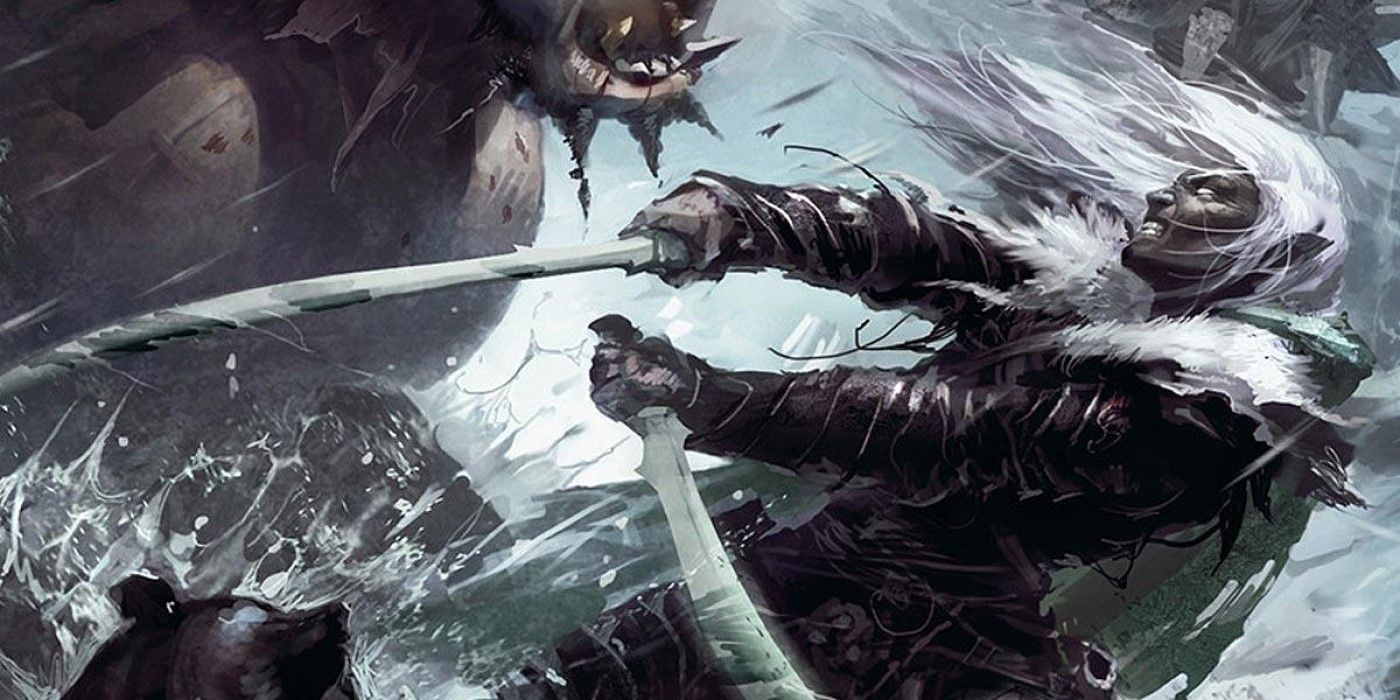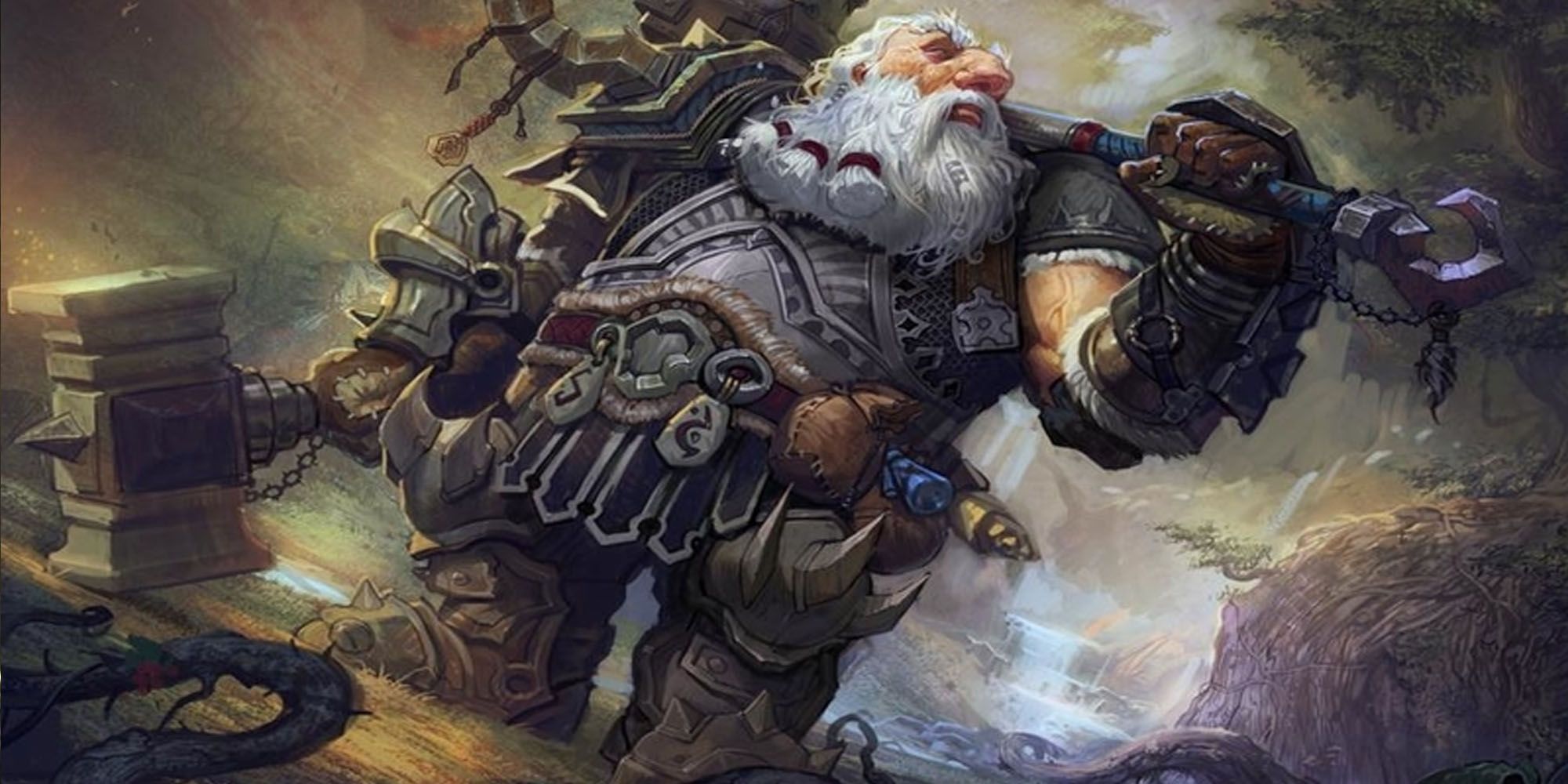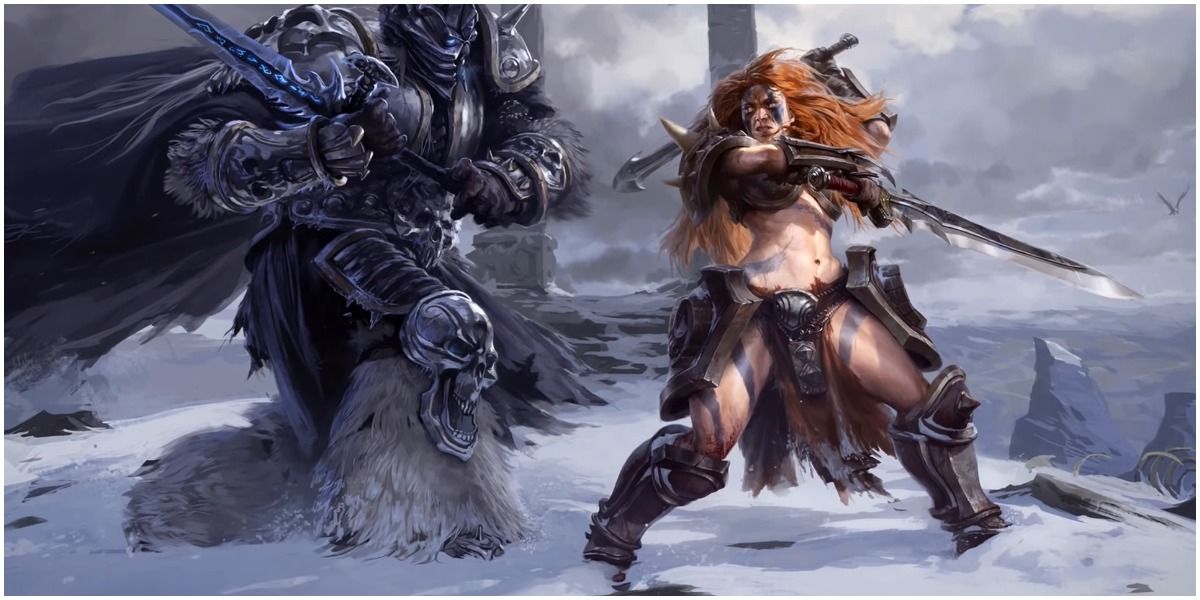Many Dungeons & Dragons players enjoy operating by the rule of cool, which rewards creative and innovative problem solving over a strict adherence to the rules -- and only thing cooler than one weapon is using two at the same time. While Barbarians traditionally are viewed as muscle-bound one-trick ponies with carry giant axes, with some finagling, there are ways to break this mold with gusto.
Creating a Barbarian who tosses the two-handed stereotype to dual-wield melee weapons isn't an easy task. It requires some know-how and planning, choosing specific feats and equipment to not only maintain the Barbarian's abilities, but excel in their role as a force of nature.
The Basics of Building a Dual Wielding Barbarian
While most dual-wielding classes such as the Rogue or Ranger focus on Dexterity, Barbarians should focus on Strength. For starters, weapons like long swords and war picks are Strength based, and do more damage than the Dexterity-based light weapons usually used by dual-wielders. However, more importantly is the Barbarian's Rage power.
When a Barbarian enters their Rage, they gain many benefits, but the important one for the dual wielding build is their bonus damage. Unlike many features in D&D Fifth Edition which limit the amount of times the bonus damage is applied, Barbarians can add this damage to every attack they make on a turn, so long as they are Strength-based. In D&D, flat bonuses are worth their weight in gold, and having more than one applied every round is a proverbial diamond in the rough. This is why it is imperative that the dual-wielding Barbarian focuses on Strength over Dexterity.
The Best Primal Path for a Dual Wielding Barbarian
Choosing a subclass for the dual-wielding Barbarian can make or break the build. Some subclasses, such as Berserker or Battlerager only get in the way of the flurry of attacks that are meant to be brought down on the enemy. For the more offensive-minded Barbarian, a good choice is the Path of the Zealot. Their Divine Fury enhances the Barbarian's already dangerous damage output and doesn't require the use of the essential bonus action that comes with Two Weapon Fighting. While this damage isn't dealt for every attack on the turn, it sends an already high flat bonus into the stratosphere.
However, if the goal is a tank build, Path of the Ancestral Guardian will keep the focus of enemies off of allies. At later levels, the subclass even utilizes a player's reaction instead of their bonus action to punish enemies who attempt to target the more squishy party members.
Necessary Feats for a Dual Wielding Barbarian
The normal rules of Two Weapon Fighting prevent the use of weapons without the Light property. Because of this, it is vital to take the Dual Wielder feat as soon as possible. In addition to giving a small bonus to Armor Class, this will allow the Barbarian to dual wield larger, more powerful weapons, such as longswords, battle axes, and warhammers, increasing the damage output from the typical heavy weapon build from 2d6 + STR to 2d8 + STR.
The next feat any duel wielding Barbarian needs is Fighting Initiate with the Two Weapon Fighting Style. Two Weapon Fighting normally doesn't allow the off-hand weapon to add the player's mod to the damage dealt, so taking this feat ensures the Barbarian's already impressive flat bonuses are even better.
The Best Races for a Dual Wielding Barbarian
When selecting a race for a dual wielding Barbarian build, it's important to look for features that increase their damage output without using their bonus action. The best option is a lesser-known race: the Grung. Being small creatures, Grung aren't exactly what one normally thinks of when it comes to a Barbarian, but their poison skin allows them to apply extra damage to piercing weapons as part of their attack action. This poison forces any creature who is hit to roll a Constitution saving throw, and those who fail take an extra 2d4 damage on each attack.
However, if the Grung's Water Dependency is an issue, the Half-Orc is also an excellent option. While critical hits are less likely to happen, the extra damage die Half-Orcs get when they do can really drive home an already powerful blow. What's more, their Relentless Endurance will keep them fighting when they would normally be out of commission.
With all of the foundation and details laid out, a dual-wielding Barbarian can easily dominate the battlefield with a frightening presence. After all, the only thing scarier than a person running around with one big axe is someone swinging around two of them.





